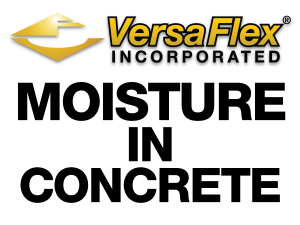Moisture In Concrete: Understanding its Effects on Coatings
 Moisture, pH, and Alkalies:
Moisture, pH, and Alkalies:
Freshly placed Portland Cement has a pH level of 12.5 (highly alkaline); it will provide passivation of embedded steel.
Carbon Dioxide and ambient air react, meaning that:
- Over time, concrete pH will reach 8.5
- Carbonizing starts from the surface and moves down at a rate of 0.04″ per year
- Cabonization proceeds most quickly at 50% RH and ceases if concrete is submerged
Effects of Alkalies and Moisture:
- Alkalies can be a problem for coatings if:
- Surface pH is too high
- Moisture traveling up through concrete brings alkalies to the surface
Sources of Moisture:
- Weather
- Precipitation before, during, and after concrete placement
- Destabilize prepared sub-base
- Saturated blotter layer can increase concrete drying time
- Erosion of top surface of newly placed concrete
- Creates high moisture content in concrete
- Precipitation before, during, and after concrete placement
- Capillary Rise
- High water tables and small enough soil granule size can result in capillary rise of water
- Hydrostatic Pressure
- High outside water table
- Osmosis
- Soluble salts at the concrete surface and the presence of moisture create osmotic blistering in coatings
- Sub-slab Vapor
- Sub-grade soil RH at 100%
- State of equilibrium is achieved between low and high RH
- Ambient RH
- Moisture in the air and the top surface of the concrete reach equilibrium
- Dew Point
- Concrete surface temperature is lower than the dew point of the ambient air
Further discussion can be found in the full PDF download.







